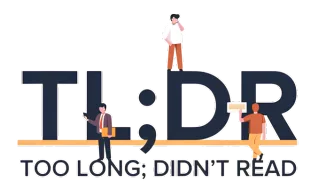The election’s over, and the polls? Well, let’s just say they missed a few things. While pundits were busy debating a toss-up, a different kind of market was quietly, and accurately, calling the race. Prediction markets, built on crypto, weren’t just close – they were, according to Wake Forest economics professor Koleman Strumpf, “the best forecast of the 2024 election.” It’s a bit humbling for those of us who rely on traditional methods, isn’t it?
- Prediction markets, especially those built on crypto platforms like Polymarket, accurately predicted the election outcome, outperforming traditional polls.
- Experts suggest that these markets incorporate an “alpha” factor, capturing insights that traditional forecasting methods may miss.
- While some caution against drawing definitive conclusions from a single election, the success of prediction markets highlights the potential of crowd-sourced intelligence.
For weeks, whispers circulated. Claims of manipulation, of pro-Trump forces gaming the system on Polymarket, a major player in this space. A lot of noise, really. Strumpf dismisses it all. “None of the hysterical claims about how markets would damage democracy or other woes came to pass,” he said. Turns out, people betting real money had a clearer view than the talking heads. Polymarket, which has seen billions in trading volume this year, gave Trump a 98.8% chance of winning while the Associated Press hadn’t even called the race. That’s a pretty confident prediction.
Markets vs. Polls: A Different Kind of Signal
The New York Times, not exactly a Trump stronghold, eventually agreed. By 1:25 a.m. ET Wednesday, their “needle” forecast showed him winning 306 electoral votes. But the markets had already spoken. It’s not about replacing polls entirely, says Haseeb Qureshi, a managing partner at Dragonfly (and a Polymarket investor). “The lesson is that markets are great and forecasts are an input to those markets. Both are valuable, and in this case they didn’t disagree by much. But markets were probably adding in some alpha into the raw forecasts that was missing.” Alpha, in market terms, is outperforming the average. Seems like these markets found something others didn’t.
Aaron Brogan, a lawyer specializing in prediction markets, offers a word of caution. He points out that this outcome could simply be a result of chance, a “modestly biasing” polling error. “Polling aggregators felt this race could swing either way, so this correct prediction market outcome could easily be the result of pure chance.” Fair enough. He’s right to avoid sweeping conclusions. But it’s still a compelling result. It’s like flipping a coin and getting heads ten times in a row – you start to wonder if something else is going on.
Hart Lambur, co-founder of UMA Protocol (which referees outcomes for Polymarket), is less hesitant. “Prediction markets work,” he states plainly. “Polymarket (and others) literally ‘predicted’ that Trump was most likely to win, when traditional polls said the race was a toss-up. It’s as simple as that: prediction markets were a better source of information than the traditional polls, and tonight proved it.” A bold statement, but one backed up by the results. It’s a reminder that sometimes, the wisdom of the crowd – especially when that crowd has skin in the game – is surprisingly accurate.
So, what does this mean for the future? Will prediction markets become a standard part of election forecasting? It’s too early to say. But one thing is clear: these markets, powered by crypto, deserve a closer look. They offer a different perspective, a different signal, and in this election, they were right. And that’s something pollsters might want to consider.

















